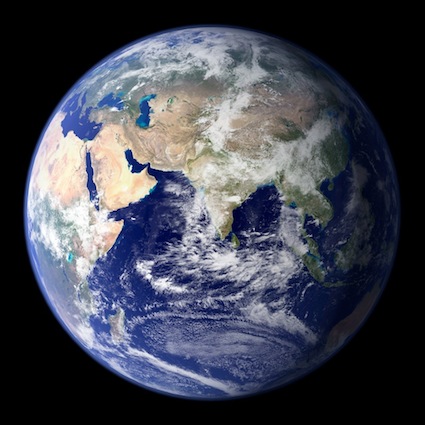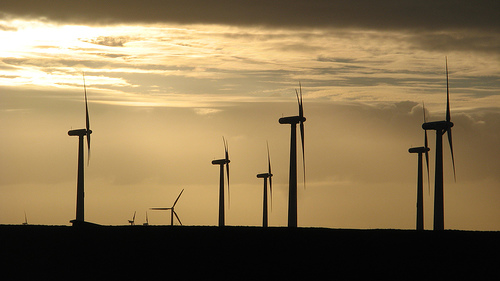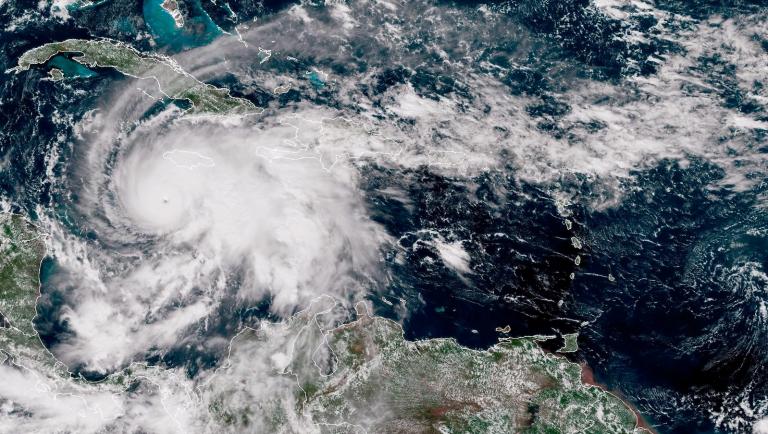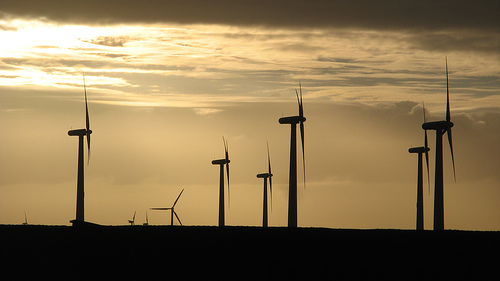 A German wind farm.Photo: Dirk Ingo FrankeAs the nuclear reactor accident at the Fukushima Daiichi plant continues to dominate the world’s attention, Germany has quietly broken more renewable energy records.
A German wind farm.Photo: Dirk Ingo FrankeAs the nuclear reactor accident at the Fukushima Daiichi plant continues to dominate the world’s attention, Germany has quietly broken more renewable energy records.
The conservative government of Chancellor Angela Merkel, struggling to stay ahead of public attitudes toward nuclear power in the run-up to regional elections, issued its annual report on the contribution of renewable energy to the German energy market in 2010.
Wind turbines, hydroelectric plants, solar cells, and biogas digesters now provide nearly 17 percent of Germany’s electricity.
Meanwhile, the German network agency Bundesnetzagentur issued its final update on the installation of solar photovoltaics (PV) in 2010.
The results are nothing short of startling and will add fuel to the heated debate about how countries such as Japan can meet their electricity needs without reliance on nuclear power.
In the immediate aftermath of the Japanese nuclear accident, Germany’s Merkel closed two reactors permanently, and another five temporarily. She also called on her government to revisit its controversial decision to extend the life of its aging reactors.
The reactors at Fukushima Daiichi are 40 years old and their license to operate had been extended by the Japanese government.
The reports on the rapid growth of renewable energy in Germany may give Merkel’s government the cover it needs to reverse direction on nuclear power, and by doing so reverse its faltering political fortunes.
Germany uses an advanced system of feed-in tariffs to pay for renewable energy generation, and has an aggressive target of meeting 39 percent of its electricity supply with renewable energy by 2020. Its system of advanced renewable tariffs has enabled Germany to exceed its 2010 target of 12.5 percent by a wide margin.
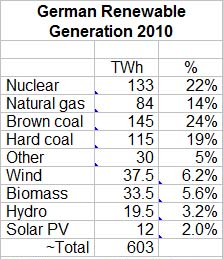 New renewables near 17 percent of electricity supply in 2010: The German Ministry for the Environment and Reactor Safety reports [PDF] that in 2010, renewable energy generated more than 100 TWh (billion kilowatt-hours) of electricity, providing nearly 17 percent of the 600 TWh of supply.
New renewables near 17 percent of electricity supply in 2010: The German Ministry for the Environment and Reactor Safety reports [PDF] that in 2010, renewable energy generated more than 100 TWh (billion kilowatt-hours) of electricity, providing nearly 17 percent of the 600 TWh of supply.
Wind turbines and biomass plants delivered more than 70 percent of renewable generation.
Biogas plants powered with methane from manure alone generated nearly 13 TWh.
In 2010, renewables generated more electricity in Germany than gas-fired power plants — nearly as much as hard coal — and are fast approaching the contribution of nuclear power.
7,400 megawatts (MW) of solar PV installed in one year: Doubling their previous record, the German solar PV industry installed 7,400 MW from nearly one-quarter million individual systems in 2010, according to the final report by the Bundesnetzagentur.
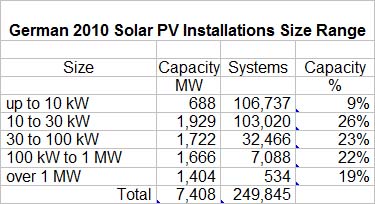 In December alone, Germans installed more than 1,000 MW of solar PV, enough solar capacity to generate 1 TWh of electricity under German conditions. While they represent only half that installed in June 2010, the December installations were 50 percent greater than total solar PV installed in the USA in 2010 and as much as that rumored to have been installed in Japan last year.
In December alone, Germans installed more than 1,000 MW of solar PV, enough solar capacity to generate 1 TWh of electricity under German conditions. While they represent only half that installed in June 2010, the December installations were 50 percent greater than total solar PV installed in the USA in 2010 and as much as that rumored to have been installed in Japan last year.
Nearly 700 MW from some 100,000 systems were installed in a size range typical of that installed by German homeowners.
An astounding 3,700 MW from more than 135,000 systems were installed in a size range representative of that installed by farmers and other small businesses.
Another 1,700 MW were installed in a size class characteristic of small businesses and large industrial rooftops.
Large, multi-megawatt systems comprised 1,400 MW of capacity or nearly one-fifth of total capacity installed in 2010.
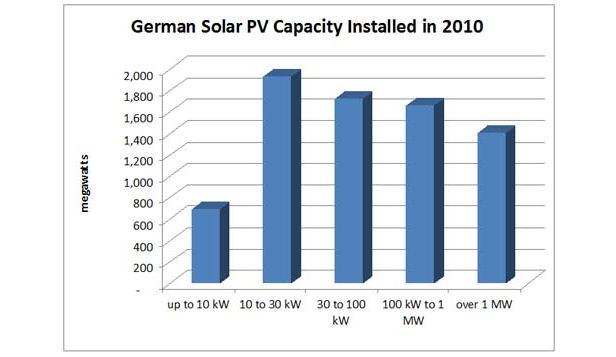
Renewable electricity more than 30 percent of supply on Feb. 7: A further sign that renewable energy has come of age as a commercial generating technology, certainly in Germany, is that penetration of wind and solar reached more than 30 percent of supply on Feb. 7, 2010, according to data posted publicly by Germany’s electricity transmission exchange, EEX.
The exchange posts online the amount of capacity of conventional generation, wind generation, and solar PV generation delivered to the grid by time of day.
On Monday, Feb. 7, 2011, the combined real-time wind and solar generation varied from a high of 32 percent of supply at midnight to a low of 18 percent of supply at sunrise. Solar PV generation delivered more than 8,000 MW for the two-hour period from just before noon until 2:00 p.m., reaching a peak of nearly 8,500 MW at noon. During the same time period, conventional sources contributed 50,000 MW and wind delivered another 10,000 MW to the network.
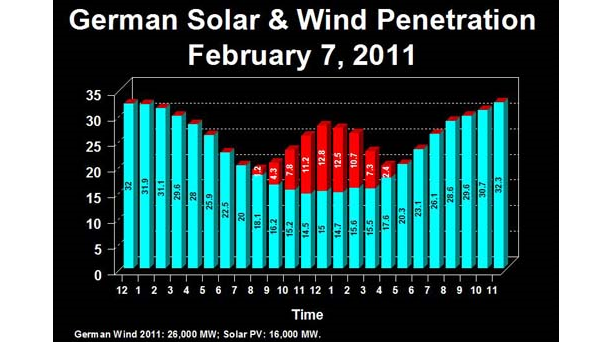
There is 16,500 MW of solar PV capacity now online in Germany. Solar insolation is weakest in mid-winter, and highest in mid-summer. The solar industry’s Feb. 7 performance bodes well for this coming summer, when solar PV can be expected to break new records.
In other Feb. 7, 2011 observations:
- PV produced 13 percent of supply at noon.
- Wind reached nearly 1/3 of generation at midnight.
- Wind and solar’s combined 18,500 MW at noon met 29 percent of demand.
- PV was producing 1/2 of its nameplate in mid-winter.
- Wind was producing near its total installed capacity.
With the Japanese nuclear calamity fresh in everyone’s mind and upcoming elections staring the government in the face, the success of Germany’s rapid development of renewable energy may give Merkel’s conservative government the flexibility it needs to weather the nuclear crisis. It would not be surprising to find the government proposing an even more aggressive pace of renewable energy development than that seen in 2010.
